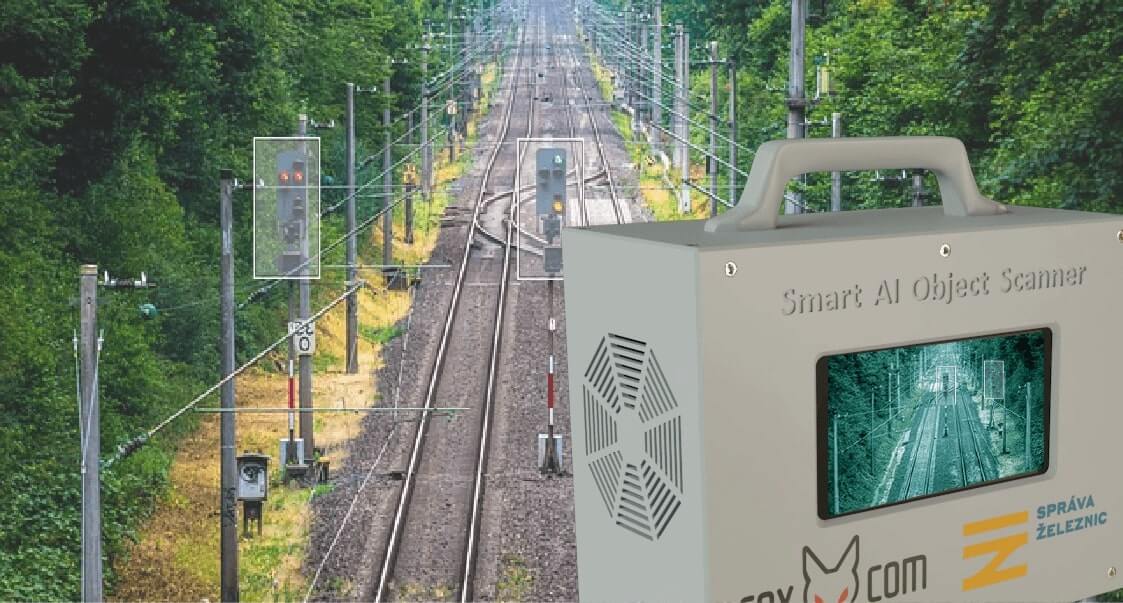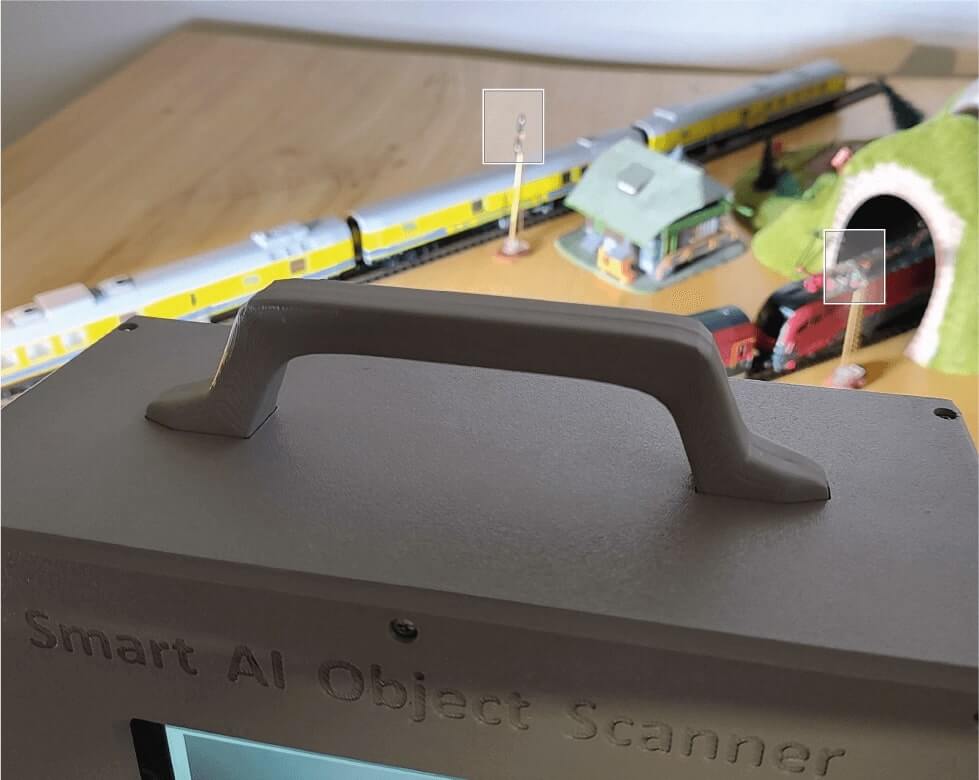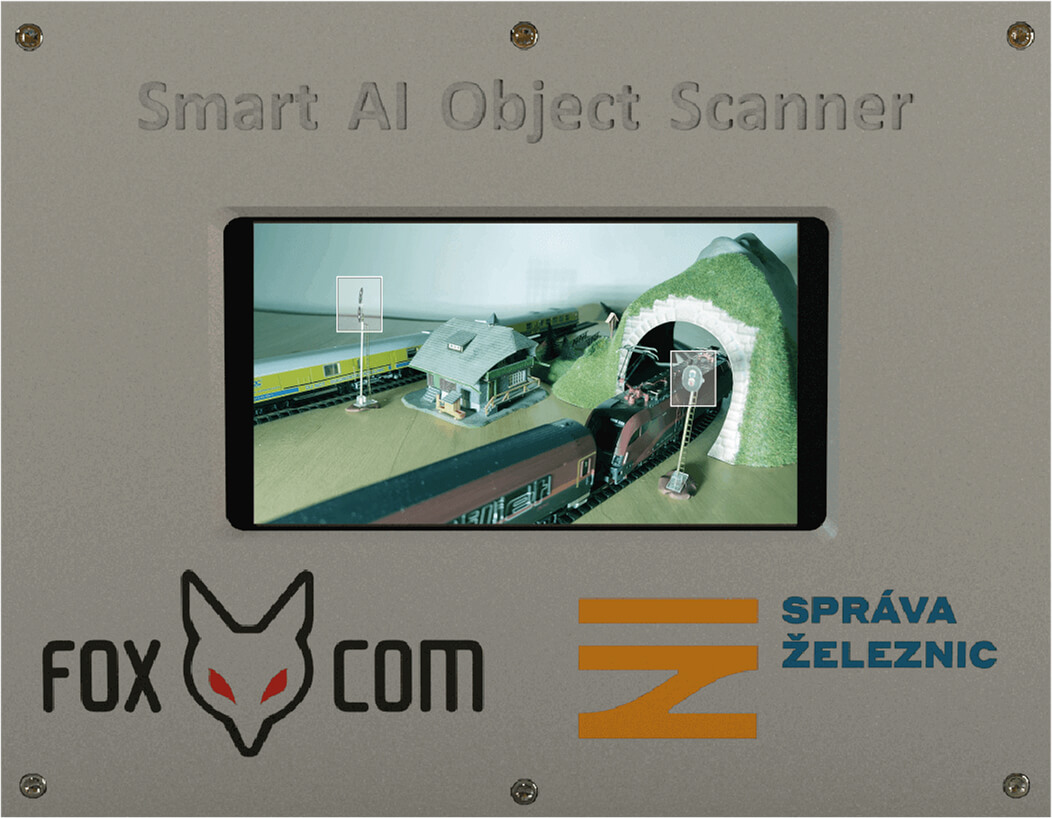The greatest benefit of infrastructure object imaging for infrastructure managers (railway, road, and navigation) is the full automation of the inspection process, which verifies the visibility, location, and condition of infrastructure objects. Thanks to built-in checks of the position of imaged objects and the detection and classification of object occurrences in the images, the biggest advantage is the significant reduction in personnel workload for checking the visibility of signals and the presence of radio devices.
For infrastructure managers, the solution thus provides more efficient use of human resources for monitoring only problematic areas, ensures 100% coverage of requirements for recording periodic inspections as per current legislation, and brings financial savings.
After processing the data, the system provides filtered reports where only a fraction of the total number of captured images needs to be checked, and only in cases where automated detection cannot reliably determine the fulfillment of required criteria for object presence and visibility. Detection sensitivity is parameterically adjustable.

The system's use is practical in many areas
Which one is yours?
railway infrastructure and railway transport
- monitoring of the condition and presence of variable and fixed signals as well as other objects
- visibility conditions of signals from the locomotive driver's workstation (operational safety conditions)
- presence and condition of objects within the railway transport corridor
public transport
- monitoring of the condition and presence of passive and active signals and traffic and service signage
- visibility conditions of signals from the driver's workstation in trams, buses, or trolleybuses (operational safety conditions)
- presence and condition of objects within the transport corridor (tram tracks, routes for trolleybuses and buses)
- inspection and visual check of the condition of public transport stop facilities
- detection of information and traffic signage (line designations, timetable conditions - damage, color deviations)
buildings that are part of the infrastructure
(e.g., traction power substation building as part of the energy distribution system)
- monitoring of building condition, detection of problems on facades, presence of lightning rods, moisture ingress, insulation issues, and other phenomena that can be visually detected
- inspection of the sightline and cross-section of the visual or access corridor to the infrastructure (vegetation encroachment into the protective zone)
operation of industrial facilities and monitoring their critical parameters
- monitoring of object condition and development of condition over time
- detection of problems on the exterior surfaces of managed and operated equipment
- presence of lightning rods, moisture ingress, insulation issues, and other phenomena that can be visually detected
- application, for example, in refineries
autonomous industrial transporters in closed manufacturing and logistics operations
- identification and detection of the status of active control elements of autonomous transport systems (radar, transmitter, beacon, mounting components)
- visual marking and presence and condition of safety elements in closed operations
power plant operations
- monitoring of the condition of objects and development of condition over time
- detection of problems on the outer surfaces of managed and operated equipment, e.g., cooling tower surfaces, long-distance fuel transport structures, condition of pipeline systems
- presence of lightning rods, moisture ingress, insulation issues, and other phenomena that can be visually detected on infrastructure objects
management of road and highway infrastructure
- inspection of the condition of signaling, traffic, and organizational signage for road and highway infrastructure
- presence and condition of objects within the road transport corridor


Possibilities of practical use for customers in the Czech Republic by sector
Management of railway infrastructure and railway transportation
institution: Správa železnic s.o.
- monitoring of the condition and presence of passive and active signals
- visibility conditions of signals from the driver's workstation (operational safety conditions)
- presence and condition of objects within the railway transport corridor
- monitoring of building condition, detection of problems on facades, presence of lightning rods, moisture ingress, insulation issues, and other phenomena that can be visually detected
- inspection of the visibility and cross-section of the visual or access corridor to infrastructure (vegetation encroachment into the protective zone)
- detection of information and traffic signage (line markings, timetable conditions - damage, color deviations) at locations managed by SŽ
institution: České dráhy a.s. and private carriers
- operation on the carrier's regular train services
- presence and condition of objects managed by the institution
- monitoring of building conditions, detection of problems on facades, presence of lightning rods, moisture ingress, insulation issues, and other visually detectable phenomena
- detection of information and traffic signage (line markings, timetable conditions - damage, color deviations)
Public transportation
institution: Public transport companies
In Teplice, Ústí nad Labem, Liberec, Jablonec nad Nisou, Ostrava, Brno, Hradec Králové, Pardubice, Plzeň, České Budějovice, and also in Prague and other large cities in the Czech Republic.
- checking the status and presence of passive and active signals and traffic and service signage
- viewing conditions of signals and traffic lights from the driver's workplace of a tram, bus, or trolleybus (operational safety conditions)
- presence and condition of objects in the traffic route (tram tracks, routes for trolleybus and bus operations)
- inspection and visual check of the condition of public transport stops
- detection of information and traffic signage (line markings, timetables - damage, color discrepancies)
- checking the status of safety signage in closed workplaces of depots operated and managed by public transport vehicles
Management of road and highway infrastructure
institution: Directorate of Roads and Highways of the Czech Republic
- checking the status of signals, traffic, and organizational signage of road and highway infrastructure
- presence and condition of objects in the road traffic route
- monitoring the condition of buildings owned by the infrastructure manager, detecting issues on facades, presence of lightning rods, moisture ingress, insulation problems, and other phenomena that can be visually detected


Practical operational, safety, and financial benefits for customers
The main benefits of automation in infrastructure management can be identified as follows:
-
Financial savings and utilization of human resources for other non-routine tasks
Thanks to automation and installation on commonly operated vehicles of the infrastructure manager, there is a certain savings of financial resources and a reduction in the number of workers who must perform supervisory and control activities, which can be very complicated in some cases. -
Monitoring the development of key indicators over time - trend analysis
Due to the ability for automatic collection of records and their storage in the data systems of the infrastructure manager, it is also possible to monitor a certain development of the monitored variables, i.e., wear, pollution, or other aspects changing over time, e.g., during seasonal periods. -
Improvement of maintenance and investment planning
Knowledge gained from the system will help to better plan maintenance or investment work, or predict safety risks. -
Elimination of errors caused by human fatigue, streamlining
This will lead to more efficient use of available human resources and other organizational savings - efficiency in monitoring and evaluation, time savings, reliability, and prevention of overlooked defects or non-standard conditions caused by human fatigue during focused monitoring of constantly changing phenomena. -
Thorough supplementation of property records and its condition in passports
By gradually supplementing missing data in incomplete record databases, the knowledge base of the current state will improve. The benefit will thus be the verification of the current, accuracy, and correctness of the passport data (property register, property records, passport, monitoring of the operational state of property) of the infrastructure manager. -
Monitoring changes, development, materials for predictive analytics
During the periodic repetition of photo and video collection, it will also be possible to monitor changes in infrastructure objects over time, predict their pollution, wear, and in the case of growing vegetation, sufficient visibility at that time.
From the time series of identified facts (object identification, classification of its condition, or deviations from normal condition, defect), trend analyses can be prepared using analytical methods. -
Archiving the condition of property over time
It will not be necessary to rely on the observations of infrastructure inspectors, or it can be partially supplemented by automated control, which brings better utilization of the capabilities of qualified workers.
In the case of damage events on property that is not frequently used, the condition before the event will also be demonstrated and the time frame of the occurrence of the event will be clarified. -
Improvement of overview and completeness of knowledge about the condition
of managed property
All these improvements will contribute to a better and more accurate overview of the current condition of the managed infrastructure objects, leading to improved operability of the infrastructure, and thus to greater traffic flow.
The imaging system indirectly contributes to higher safety in the use of the infrastructure. -
Fact-based reporting, improved control and management of the organization, inputs for more
precise strategy
Thanks to the long-term collection of photo and video documentation, assigned to individual objects, the generation of audit reports and other materials related to the fulfillment of the duties of the infrastructure manager will be significantly simplified.
Support for sustainable development in the EU and the Czech Republic, respecting the priority axes of reducing energy consumption in society.
The solution is environmentally friendly and minimizes electricity consumption.
We contribute
to sustainability in energy-intensive transportation and other sectors.
The hardware used is low-consumption. We utilize a small compact camera and single-board computers with low power consumption; other components are also energy-efficient.
For the server, we prefer hardware that allows active power management using ACPI.
The presented system brings savings and efficiency improvements in supervisory and control
processes in asset management. Many routine tasks, which require attention, will be performed
by machines instead of humans.
Human potential can be redirected to other activities
with higher added value.
Operating on mobile devices does not require special vehicle trips and any regular trips can be utilized. For example, the equipment can be installed on any train following its regular route, simultaneously collecting data to capture the condition of the monitored assets and interest objects at that time.
This leads to more efficient use of resources.
